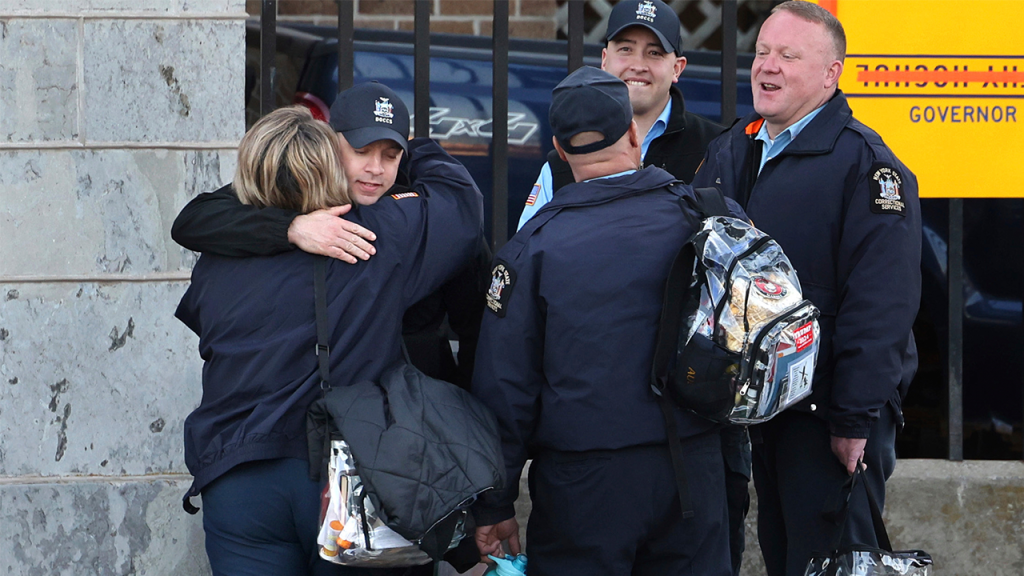In a dramatic turn of events, over 2,000 correctional officers in New York have been terminated following an illegal wildcat strike that lasted for more than three weeks. The strike, which began on February 17, was prompted by frustrations over working conditions, but after lengthy negotiations, a temporary resolution was reached. Officials indicated that, despite the high number of terminations, some provisions from the negotiated deal would be honored as the state works to bolster its prison staffing levels.
| Article Subheadings |
|---|
| 1) Overview of the Wildcat Strike |
| 2) The State’s Response to the Strike |
| 3) Impact of Terminations on Staff and Operations |
| 4) Allegations of Misconduct and Staffing Issues |
| 5) Conclusion and Future Implications |
Overview of the Wildcat Strike
The series of events that led to the termination of over 2,000 correctional officers is rooted in a wildcat strike that commenced on February 17. Frustrated with deteriorating working conditions and inadequate staffing levels, officers across various state prisons began to walk off their posts. The strike was unauthorized by their union, the New York State Correctional Officers & Police Benevolent Association, thus complicating legal and operational aspects for the striking officers. By the time the strike reached its conclusion after 22 days, enough officers had returned to work, prompting the state to call an official end to the labor action.
The State’s Response to the Strike
In the aftermath of the strike, New York State officials, including Corrections Commissioner Daniel Martuscello, reported that the state was prepared to accept some negotiation terms despite not meeting the desired staffing percentage initially sought. Generally, the agreement stipulated that at least 85% of correctional staff needed to be back on the job by that following Monday. Although this threshold was not achieved, the state committed to revisiting several aspects of the deal, particularly those pertaining to overtime regulations. The involvement of the National Guard also became a critical element, as they were deployed to support operations in various correctional facilities impacted by the strike.
Impact of Terminations on Staff and Operations
The decision to terminate over 2,000 correctional officers came as a shock to many, particularly as the state had seen a substantial reduction in available security staff. Prior to the strike, approximately 13,500 employees were available to manage prison operations; this number dwindled to about 10,000 due to the strike and subsequent terminations. Martuscello emphasized that affected employees who did not receive pre-approved medical leave were let go effective immediately following an established deadline. This significant reduction in personnel raises concerns about the safety and security within state prisons as they navigate the remaining operational challenges.
Allegations of Misconduct and Staffing Issues
At the heart of the strike were complaints regarding the working environment of correctional officers, which many have described as unsafe and untenable. Allegations of mistreatment and violence in prisons have surfaced, culminating in investigations concerning the deaths of inmates during the strike period. For instance, a special prosecutor is reviewing the controversial death of 22-year-old inmate Messiah Nantwi at Mid-State Correctional Facility. Witnesses allege that he was beaten by correctional staff, leading to claims that up to nine officers may face implications related to his death. Such incidents further highlight the precarious conditions inside the state’s prisons and the urgency for effective staffing and operational oversight.
Conclusion and Future Implications
Looking ahead, the implications of these recent events extend beyond immediate personnel decisions. The state will need to pursue a comprehensive recruiting strategy to replenish its ranks and ensure the safety of both staff and inmates alike. While it has suspended the enforcement of certain regulations, including limitations surrounding solitary confinement, the long-term ramifications of the strike and subsequent terminations may influence the dynamics of labor relations in public service moving forward. The resolution of this ongoing crisis will require persistent attention from state officials to balance the demands of correctional officers with the operational needs of the facilities they serve.
| No. | Key Points |
|---|---|
| 1 | Over 2,000 prison guards have been fired following a wildcat strike that lasted three weeks. |
| 2 | The strike was prompted by frustrations with working conditions and was not sanctioned by the guards’ union. |
| 3 | The New York State National Guard was deployed to assist in staffing during the strike. |
| 4 | There are ongoing investigations into the deaths of inmates during the labor action. |
| 5 | Future implications could affect labor relations within the public sector, particularly in correctional facilities. |
Summary
The termination of over 2,000 New York prison guards marks a significant juncture in labor relations within correctional facilities, bringing to light pressing concerns about workforce safety and the treatment of inmates. As the state grapples with the fallout of the wildcat strike, the commitment to enhancing working conditions and restoring sufficient staffing levels will be crucial for ensuring the stability and security of its prisons. The ongoing investigations and allegations of misconduct further complicate this landscape, emphasizing the need for systemic changes to avert similar issues in the future.
Frequently Asked Questions
Question: What led to the wildcat strike by prison guards in New York?
The wildcat strike was primarily motivated by frustrations regarding working conditions, inadequate staffing levels, and overall safety issues faced by correctional officers.
Question: What were the consequences of the strike for the prison guards involved?
As a result of the strike, over 2,000 prison guards were terminated for not returning to work. Those who did not have pre-approved medical leave faced immediate dismissal effective Monday morning.
Question: What steps is the state taking in response to the reduction in correctional staff?
The state is pursuing an aggressive recruiting campaign to rebuild its correctional workforce and has also deployed the National Guard to assist existing staff during this transitional period.


